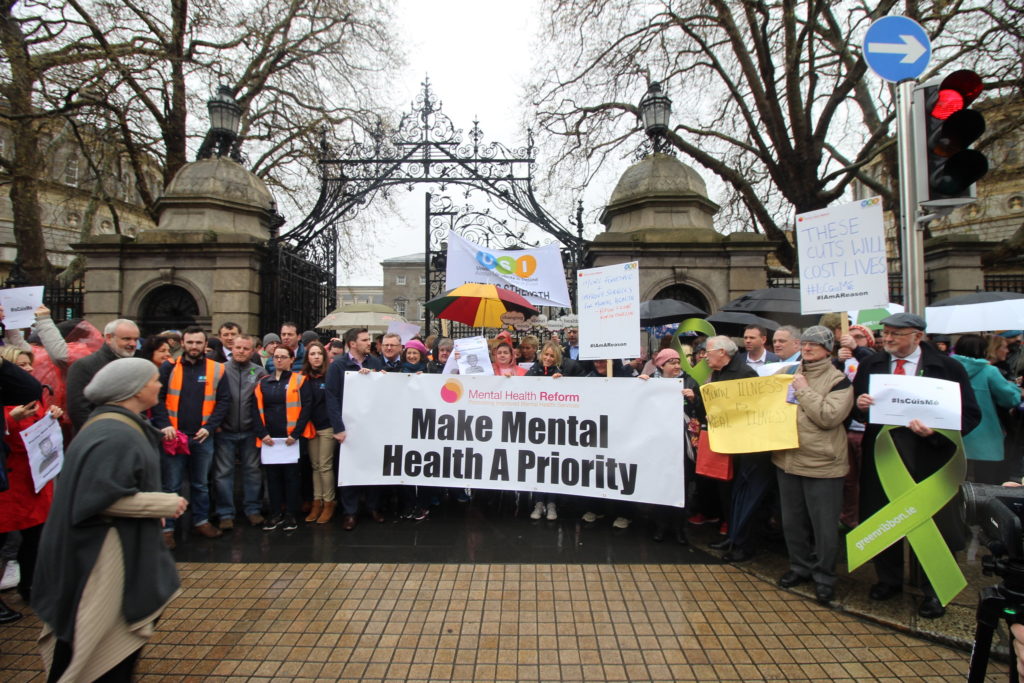Researchers from McGill University recently released an article outlining inequities in mental health care for indigenous, immigrant, refugee, and radicalized Canadians. They argue that inequities are embedded in cultural knowledge, which shapes experience and expression of mental distress. They go on to suggest a variety of deficiencies they hope to address with policy innovation, including cultural competence, quality assurance standards, cultural brokers, and culturally integrative service system designs.
“Culturally safe and responsive services and systems are essential to achieve equity in mental healthcare,” write the authors. “Integrating culture in mental health services and systems is not just an issue for groups that face specific inequities related to their identity and social position but is central to person-centered healthcare for all.”

A variety of factors contribute to inadequate access to mental health care and other mental health inequities in Canada, including structural factors like poverty and discrimination, as well as how culture shapes the experience and expression of mental health issues, coping mechanisms, and pathways to effective care. In addition to the modes of self-understanding that culture affords, cultural knowledge can serve to rationalize, hide, create, or maintain systematic inequities in mental health problems.
In Canada, there has been a general embrace of culture in Indigenous, immigrant, refugee, and ethnocultural communities, reflected in linguistic, religious, and intergenerational practices. The authors identify a multitude of cultural factors within these communities that influence social determinants of health, such as the effect of language, modes of learning, and knowledge impact education and literacy.
“In most instances, the impact of a social structural factor is mediated by cultural meaning and the practices of the specific group or community and of the larger society in which they are embedded,” write the authors. “The fact that culture undergirds structural issues means that any effective approach to intervention must include both recognition of diversity and redistribution.”
Despite Canada’s universal healthcare coverage, there are significant structural barriers that impact mental health care access – these can include economic factors, lack of childcare, or cultural differences in help-seeking and relationships to mental health. Indeed, culture may, in and of itself, be a determinant of mental health, and the inability to participate in one’s own culture and pass on culture intergenerationally may impact health and well-being.
The authors identify several strategies to address culture in mental health care, including mental health literacy, language interpreters, culture brokers, ethnic matching, cultural adaptation of interventions, cultural competence of clinicians, cultural competence of institution and healthcare system, cultural humility, cultural safety, and structural competence.
Mental health literacy requires conscious thought regarding cultural differences and enables a reduction in stigma as well as increased access to and use of services. However, it has weaknesses surrounding assumptions of culturally grounded knowledge, perhaps not addressing structural barriers to care, and lack of questioning of cultural assumptions of standard care. Language interpreters facilitate the fundamental experience of accurate communication and create a collaborative process. It must extend beyond pure linguistic interpretation, however, and often suffers from a lack of professional interpreters. Of culture brokers, the authors write:
“Intercultural clinical communication depends on more than language. Understanding and responding to patients’ symptoms and concerns require broader cultural knowledge. Culture brokers, who are paraprofessionals trained to act as mediators or go-betweens in clinical settings, can provide the missing context to practitioners and patients to improve clinical communication. Programs with cultural mediators or link workers have been developed in Canada and internationally. However, currently, there are no standards for training, assessment and quality assurance of culture brokers, nor are there established methods for funding this essential resource.”
Ethnic matching supports a feeling of welcoming, draws on specific group-related knowledge, and allows for targeting on different levels of care with different effects. Matching suffers from its lack of precision and generalizability, its potential for stigma, and the potential for variation across metrics wider than ethnic groups.
Cultural adaptation of interventions allows for tailoring of mental health care to ensure appropriateness for individuals and to enable culturally grounded coping strategies, but is often lengthy, costly, and requires additional evaluation. Cultural competence can be implemented on a clinician or institutional level. While each level has benefits, including the development of generic, widely-applicable skills and the alteration of institutional culture, the implementation can often be superficial and overly focused on surface-level characteristics rather than addressing structural change. To address this issue, the authors discuss the idea of cultural safety.
“Concern that cultural competence emphasizes professional expertise at the expense of patients’ own voices, identity and self-understanding have led to alternative perspectives in clinical training and practice,” the authors write.
“Cultural humility emphasizes the importance of practitioners recognizing the limits of their understanding and maintaining an open stance toward the other. Cultural safety, a concept developed originally by Maori nurses in New Zealand, takes this further to focus on the ways in which a lack of knowledge of history and social context, along with power disparities, racism, and discrimination, makes mainstream institutions unsafe for minorities. Cultural safety begins with the recognition of these forms of structural violence, in addition to disempowerment and silencing, and works to redistribute power and control over health- care delivery in ways that create a safe space for clinical work.”
Cultural humility recognizes that clinicians have limited access to the cultural knowledge of cultural groups of which they are not members; while this can enable culturally based understanding of illness, it can put the onus of appropriate care on the patient. Finally, structural competence focuses on issues of power, structural violence, and inequality, but can fail to address personal and cultural impacts on the relationship between mental health and structural factors.
Given Canada’s multicultural history, Canada stands at a unique crossroads to address diversity in mental health care. To do so requires an understanding of developmental, social, and political impacts on culture. The authors close by suggesting several national policy needs:
- Systematic incorporation of cultural safety, competence and anti-racism training into professional education
- Regular use of interpreters alongside practitioner training and adequate funding
- Development, training, and support for culture brokers to support linguistic interpreters
- Integration of culture within systematic systems designs aimed to promote mental health and conduct clinical assessment/interventions
“All of this work requires reaching beyond the healthcare system to engage stakeholders in community organizations, ethnocultural associations, and religious institutions,” the authors conclude.
“This engagement can be animated by a shared respect for diversity and commitment to building a pluralistic civil society… Culturally informed clinicians and researchers, who appreciate how these collective anxieties impact the health and well-being of individuals, need to advocate more broadly for policies and practices that foster cultural safety and respect for all.”
****
Kirmayer, L. J., Jarvis, G. E., (2019). Culturally responsive services as a path to equity in mental healthcare. HealthcarePapers, 18(2), 11-23. DOI:10.12927/hcpap.2019.25925 (Link)















The hidden goal of psychiatry is to make people work far away from established society, and this is a contradiction, since psychiatry itself forbids people with unstable conditions to work far away (and at night time) and the main reason of this phenomenon is the lack of street lighting.
Report comment
Better yet, how can we dismantle the “mental” healthcare system entirely and instead focus our efforts to ending all of the negative SDOH that drive the majority of psychosocial distress? Then we could refocus those “mental health care” dollars to curing the diseases that contribute to poor emotional wellbeing, like Lyme disease. The overlap between Lyme endemic areas of the US is identical with the geographic distribution of schizophrenia and this has been known by researchers since 1994.
When will the medical community return to curing physical illnesses? As importantly, when will our politicians care about those without deep pockets?
This is a farce and trying to make a form of social control more culturally diverse is akin to sticking lipstick on a pig and calling it Sarah Palin.
Report comment
Yep. One of those “moderate” articles published to show MIA is not too anti psychiatry and (hopefully) score points with members of the APA and other big shots.
You can find pieces like this all over. Guardian, Psychology Today, etc. College sites too. Talk of “culture” could make it a shoe-in for the psychology department’s website.
Nothing distinctively MIA about it.
Report comment
Removed for moderation.
Report comment
Ever noticed how psychiatry writes new articles on a daily basis?
Why?
It’s been in business for hundreds of years.
It should be operational by now.
It’s not.
It’s in trouble.
You can tell by the many ‘studies’
Studies are a diversion for simple minded folks.
Report comment